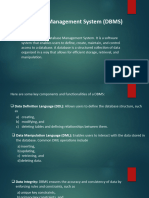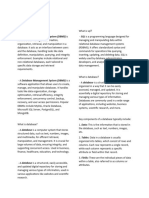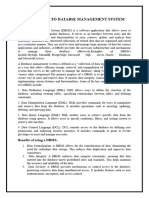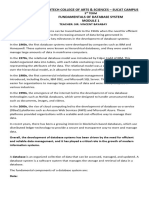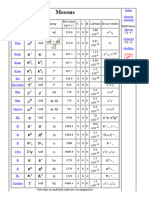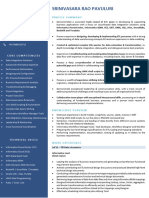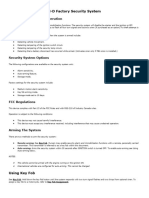0% found this document useful (0 votes)
12 views2 pagesDBMS Basic Notes
A DBMS (Database Management System) is software that enables users to create, manage, and access databases, serving as an interface between the database and applications while ensuring data security, consistency, and integrity. Key concepts include databases, schemas, tables, records, fields, keys, and SQL, along with advantages such as data organization, integrity, security, sharing, and recovery. Common types of DBMS include relational and NoSQL systems, with operations categorized into DDL, DML, and DCL, and additional concepts like transactions, ACID properties, normalization, and indexing.
Uploaded by
amanmalikup786Copyright
© © All Rights Reserved
We take content rights seriously. If you suspect this is your content, claim it here.
Available Formats
Download as PDF, TXT or read online on Scribd
0% found this document useful (0 votes)
12 views2 pagesDBMS Basic Notes
A DBMS (Database Management System) is software that enables users to create, manage, and access databases, serving as an interface between the database and applications while ensuring data security, consistency, and integrity. Key concepts include databases, schemas, tables, records, fields, keys, and SQL, along with advantages such as data organization, integrity, security, sharing, and recovery. Common types of DBMS include relational and NoSQL systems, with operations categorized into DDL, DML, and DCL, and additional concepts like transactions, ACID properties, normalization, and indexing.
Uploaded by
amanmalikup786Copyright
© © All Rights Reserved
We take content rights seriously. If you suspect this is your content, claim it here.
Available Formats
Download as PDF, TXT or read online on Scribd
/ 2


